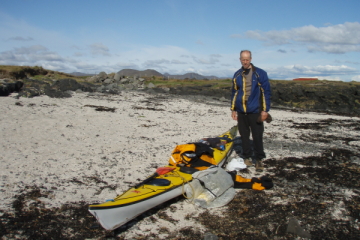
Photos: Gisli H Fridgeirsson
On August 3, Gisli H. Fridgeirsson became the first Icelander to circle his native country in a kayak, landing at Cape Geldinganes in Reykjavík after a two-month solo journey.
Accompanied at different times by whales, seals and seabirds, Fridgeirsson kayaked along the northern shore mostly at night, taking advantage of the generally light evenings. In an interview with Icelandic newspaper Fréttabladid, Fridgeirsson described his adventure as a personal journey.

